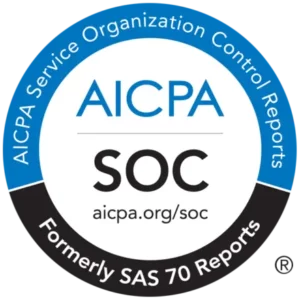As you are likely aware, primary sources and secondary sources differ from one another. This is not simply a labeling tactic to establish a source’s different quality or caliber, but a distinction of where it originated and perhaps its purpose.
Whether you are writing a research paper, an ebook, a legal document, or some other journal article, it is essential to know the difference between primary and secondary sources. Therefore, let’s break down what a secondary source is and some examples of secondary sources.
This guide should help you identify the types of secondary sources and when to use a secondary or a primary source.
What Is a Secondary Source?
According to the Harvard Library, a secondary source is an account of something created by someone who did not experience or participate in the act or event first-hand. Simply, this means that a secondary source tends to be one or more steps removed from the original or primary source.
Commonly, a secondary source is used to summarize, analyze, evaluate, or interpret the primary source. This can be done as a critique or as a means of providing supplemental information. Because of this, the secondary source is likely to reference the primary source or incorporate elements from a primary source, such as pictures, quotes, or statistics.
However, these elements are not incorporated as a whole. Most secondary sources summarize a primary source or focus on a particular aspect for one reason or another. In this way, a secondary source is not only a second-hand telling, but it is not a complete representation of the primary source either.
Examples of Secondary Sources
There is not a single type of secondary source; the term can apply to many different types of books or articles. However, some examples are more commonly considered than others, such as
- Biographies
- Articles or books of criticism (literary, historical, etc.)
- Encyclopedias
- Journal articles (that do not establish or provide new research)
- Essays
- Historical textbooks
This is by no means a complete list, but it provides a helpful basis for what a secondary source is. To explain a bit further, a journal article can be a primary source if it presents brand-new information or research. Many scholarly articles based on new statistical data or scientific research offer a new theory or discussion of our culture. This is a primary source because it has not been published, and the ideas have not been demonstrated.
A journal article would be a secondary source if it relied on existing information to reinforce its messaging or perhaps refute it. Recounting an event already published, for example, and adding additional context or theory does not make it a primary source. It is still a second-hand account of an event or research that has already transpired.
Biographies are a typical example, and the big difference between them and their counterpart: Autobiographies. Autobiographies are told by the person who experienced the event, and biographies are told by another. Even if the story is similar, the author of a secondary source did not experience these events firsthand.
Find out what's in your copy.
Get started with Copyleaks for free today!
Type of Media Doesn’t Matter
A secondary source can take the form of any media, such as a blog or social post (or repost). The same is true for primary sources. The world has changed, and no longer are books in libraries the only place for valid information. Social media accounts have become a significant arena for primary sources.
Fact-checking is indeed necessary when considering the validity of a social media post as a primary source. But, if someone is experiencing an event firsthand, takes a photo on their phone, and publishes it to the world, this becomes a primary source of this particular account.
If a news program were to use that social media post to tell a larger story, this news program would become a secondary source. Even though the information is the same, the person sharing it is different, and the context in which it is applied carries a different weight.
To break this down further, a fraction of an event told by a person who witnessed it is still considered a primary source, even if their account isn’t complete. For example, if an earthquake impacts many people, the details and facts of the earthquake from an ecological network are not the only primary sources. Many people will experience this event firsthand, and though their accounts might all be different, they are all primary sources since they all are witnesses to the event.
If later, someone who wasn’t present in writing a research project on this particular earthquake and telling the story as a whole, this becomes a secondary source. Not only was the author not there to witness the event firsthand, but the information they are compiling is from the primary accounts of the events.
This doesn’t make the secondary source less valid than the primary one; instead, it serves a different purpose. But, when citing or referencing information, knowing this distinction is crucial.
Fact or Fiction
It is common to think of primary and secondary sources as factual, but this has no bearing on the definition of a secondary source. Whether citing a major current event or citing historical knowledge, the distinction between what is a primary source and what is a secondary source plays a significant role.
However, this is true in any telling, including fiction. If an author creates a work of poetry, then that work is a primary source. It was written down and published and is the first of its kind. If, later, someone were to analyze or critique this work of poetry, then this critique would be considered a secondary source.
The Distinction is Important
Both primary and secondary sources have value in the literary world and the historical or political. Depending on the purpose of the journal article you are working on, you might need to reference both sources. This might make your article more impactful, as well as insightful.
Knowing the difference between primary and secondary sources can help you better navigate the context of sources and better understand what each is trying to achieve. It can help you make your point more soundly and well-rounded.
However, with so much information at our fingertips, it is important to know more than whether a source is primary or secondary. We need to make sure it is cited correctly or original. This brings up the question of plagiarism and how to detect it. Thanks to our online tools, we can help you identify plagiarism or prevent it from coming across your desk.
Copyleaks can help you validate a source, so there is never a question about the information you are looking through, regardless of the purpose.
Detect Plagiarism In Seconds with Copyleaks

